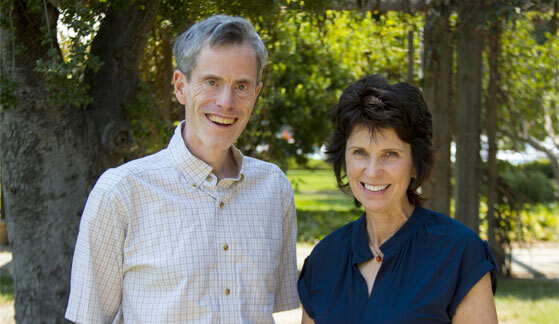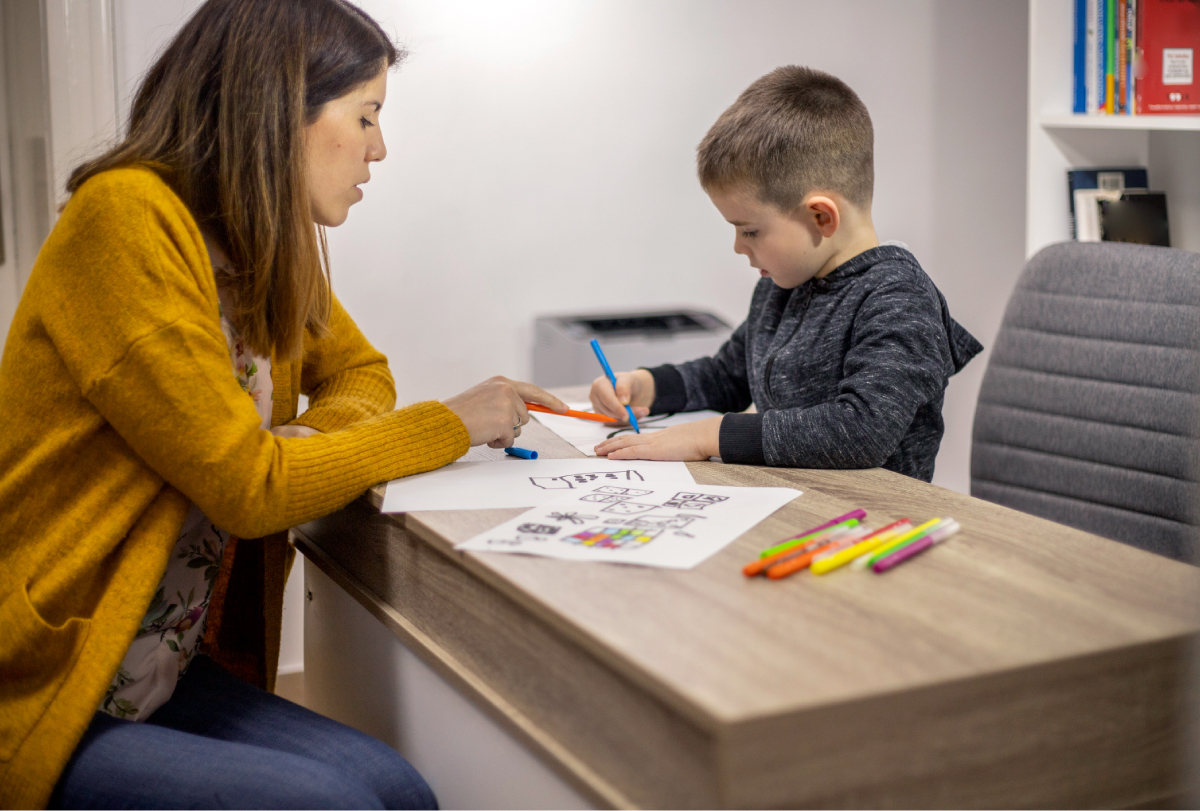When Connie Kasari and Tristram Smith first met in 2007 at the Autism Center of Excellence (ACE) meeting in Washington, D.C., they gravitated toward each other.
Devotees of autism intervention science, they ended up in the same breakout group and quickly realized they shared a goal: to work with children who are underrepresented in research and often excluded from intervention studies.
“Both of us knew autism from direct, hands-on experience and were driven to find ways to optimize the developmental and functional outcomes of young children,” says Kasari, distinguished professor of human development and psychology at the University of California, Los Angeles.
A decade earlier, Kasari had created a play-based intervention called JASPER; Smith, at the time professor of developmental and behavioral pediatric research at the University of Rochester Medical Center in New York, had researched a different kind of intervention called discrete trial training (DTT), in which clinicians teach new skills by breaking them down into smaller steps.
After the meeting, the pair kept in touch, and eventually they decided to compare their approaches in a diverse group of minimally verbal preschool children. They received funding for the project in 2009 and started collecting data shortly after.
“Neither of us were wedded to our approach,” Kasari says. “It was really a scientific question, and I don’t think our egos were on the line here.”
The researchers tested both interventions in preschools in three cities, but in 2018, as they were writing up their results, Smith suddenly died from a heart attack at the age of 57. His colleagues were devastated, Kasari says.
Finalizing the paper fell to study investigator Rebecca Landa, executive director of the Center for Autism and Related Disorders at the Kennedy Krieger Institute in Baltimore, Maryland, and Lynne Levato, one of Smith’s mentees, now assistant professor of pediatrics at the University of Rochester Medical Center. The research team finally published what they found in Autism Research in April of this year, with Smith as the last author: Both interventions, it turned out, had helped the children to develop language, though the methods’ effectiveness in different areas varied.
Smith and Kasari’s “gentle rivalry,” as Smith’s mentee Suzannah Iadarola describes it, was born out of shared desire to increase access to personalized intervention services for autistic children.
Comparing the two “intervention methods could have easily been a fight between the two researchers, but they did it in a really collegial way,” says Iadarola, associate professor of pediatrics at the University of Rochester, who was not involved in the work. “At the end of the day, they both wanted to get the best programs and best services into the hands of everybody in the community, and that was the inspiration for this work.”
B
oth Kasari and Smith wanted to study children in their own environments. For Kasari and her colleagues, that meant driving up to 20 miles from their office in Westwood, Los Angeles, every day to deliver interventions to children primarily in Title 1 schools, where most students are from low socioeconomic backgrounds.Similarly, Smith and his colleagues led DTT and JASPER sessions in preschools in Rochester, and Landa led DTT sessions in Baltimore.
The cohort included 164 minimally verbal autistic preschoolers from diverse racial backgrounds: 18 percent were Asian; 16 percent were Black; 41 percent were white; and 24 percent were mixed race. In terms of ethnicity, 20 percent of the participants identified as Hispanic.
Over four months, the children received either JASPER or DTT at their preschool for five hours a week. For two additional months, caregivers were coached at home twice a week while the school intervention decreased.
The participants made significant gains in their expressive and receptive language abilities after treatment, regardless of the intervention they received. About a quarter gained phrase speech — a developmental milestone in which children can combine words and turn them into sentences — by the end of the treatment, and one-third had it six months later. People with phrase speech are not considered minimally verbal.
“The children in the study were so far behind in the beginning, so when you see progress, you are very excited,” says Kasari.
Twenty-four of the 79 children who received JASPER and 27 of the 82 who received DTT started the study with no words; after six months, 14 of the nonverbal JASPER recipients remained unchanged, whereas 10 progressed to have socially communicative utterances. Similarly, 10 of the nonverbal DTT participants made no gains, but 17 did.
None of the children in either group started with phrase speech, and 23 in the JASPER group and 21 in the DTT group left treatment with that ability.

Among children receiving JASPER, those with higher receptive language and more joint attention at the start of the study tended to improve more. But six months after the treatment ended, children who had received DTT had made more progress with spoken language. The latter difference could be due to the fact that these children continued to receive DTT as a part of school programs, Kasari says.
“There is a lot of variability amongst these children,” Kasari says. “These different profiles should tell us that they might respond differently to different interventions and that we need to get better at fitting the intervention to the child.”
Children could start with one intervention and switch to another as they grow and change, she says.
I
t was important that the researchers stepped outside of the lab and studied the children in school, says Donna Murray, associate professor of pediatrics at the University of Cincinnati in Ohio, who was not involved in the work. “Once you know how effective the intervention approach is, you can begin to train the community-based providers to implement with the same degree of effectiveness.”The lack of a control group who received neither JASPER nor DTT weakens the statistical power of the findings, Kasari says, but she and Smith did not want any of the children to be left without access to an intervention. “It’s important to be principled in how you carry out a study.”
The decision illustrates Smith’s out-of-the-box approach to science, Landa says. “Tris was an excellent and compassionate interventionist who was very tuned into children and families,” she says. “He understood the mental health component and the humanity of the patient in front of him.”
Once in 2015, when Kasari and Smith attended a small community conference in southern Los Angeles, a mother and her autistic son came up to Smith during lunch to give him a hug. Decades earlier, when the man was a child, Smith had been his therapist.
“The mother was appreciative of Tris and remembered him, even after all these years had passed,” Kasari recalls. “Tris has touched and trained many people.”






